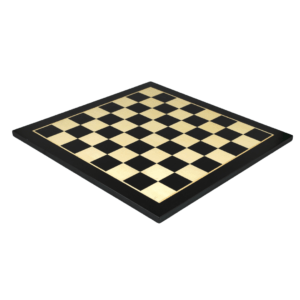
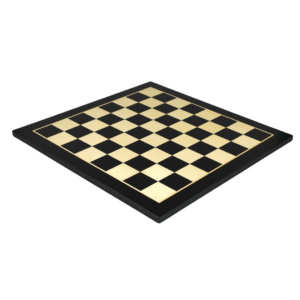
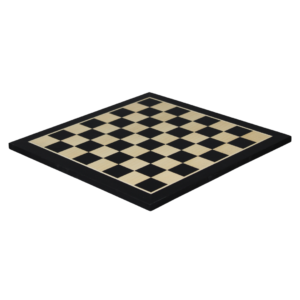


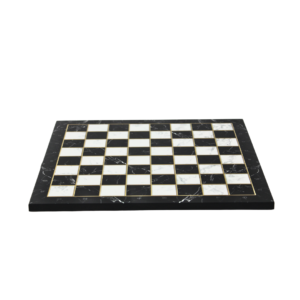
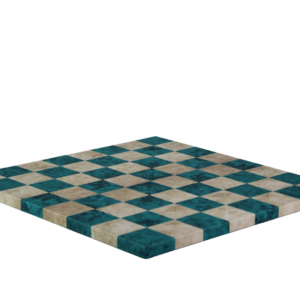

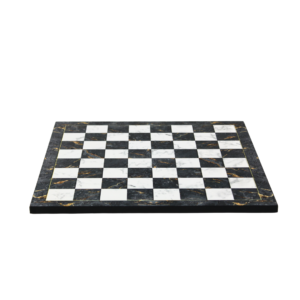
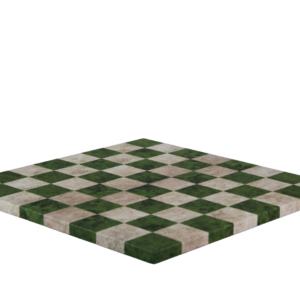


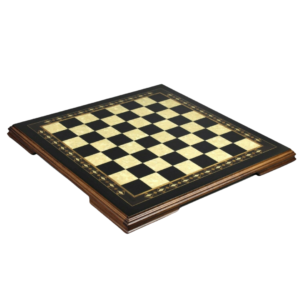
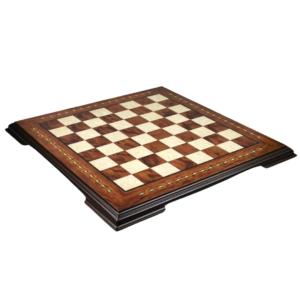
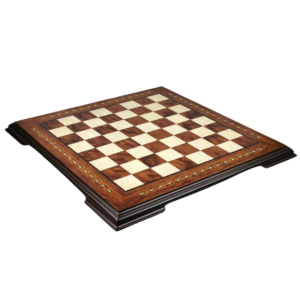

Chess is not just a game; it’s a battle of minds, where the board plays a pivotal role in every match. The chess board you choose can significantly influence your gameplay, comfort, and even the aesthetic of your playing environment. In this article, we’ll delve into the essential factors to consider when selecting the perfect chess board: size, square dimensions, colours, materials, and durability.
When it comes to chess boards, size matters. The first consideration in choosing a chess board is understanding the various size options available. For official tournament play, a standard chess board typically measures around 20 inches (50 cm) with squares that are about 2 inches (5 cm) on each side. This is ideal for providing enough space for comfortable piece movement and visibility, making it a preferred size for competitive play. However, not all players need a tournament-sized board.
For casual play at home, many people opt for a smaller or more compact board. These can range from 16 to 18 inches (40 to 46 cm), making them more practical for personal spaces or those who prefer portability. For travel or outdoor use, folding boards or roll-up vinyl boards are popular because they can be easily packed away, offering convenient solutions for those on the go. Deciding on the right size depends on where and how you intend to play, so it’s important to balance portability with the comfort of a larger board for everyday use.
The square size on a chess board plays an essential role in ensuring the board is both functional and comfortable to use. A general rule of thumb is that each square should be large enough to accommodate the chess pieces comfortably, with space to move them without obstruction. Typically, the square size should fall between 1.5 to 2.5 inches (4 to 6 cm), depending on the size of your pieces. A well-proportioned board ensures ease of play, as it prevents pieces from becoming crowded on smaller squares.
For a smoother game, it’s also important that the square-to-piece size ratio is balanced. For example, a 2-inch square is usually ideal for a standard chess set, allowing each piece to move freely without the risk of hitting other pieces on the board. Additionally, the size of the squares should not only support piece mobility but also enhance visibility, particularly in competitive settings where clarity is crucial. Clear contrast between light and dark squares ensures that players can easily identify positions and plan their strategies.
The colour of your chess board is more than just an aesthetic choice—it can also affect your experience and comfort during play. Traditional chess boards often feature dark and light squares, typically black and white or brown and beige, which have been standard for centuries. These colour choices not only provide a classic look but also enhance the visibility of the pieces. The contrasting shades make it easier to differentiate between squares, especially during fast-paced games or tournaments.
In recent years, many chess enthusiasts have embraced modern and artistic colour combinations, incorporating hues like green, blue, or even bold, vibrant shades. While these options add a personal touch, it’s crucial to consider the contrast between the squares and pieces. The primary goal should always be readability and visibility, so choosing colours that allow for easy identification of squares and pieces is key.
The traditional black-and-white or brown-and-beige boards remain the most popular because they provide a timeless appeal and ensure that the game remains the centre of focus, rather than the board itself. However, some players may prefer a more unique or personalized touch to their setup, and in such cases, the right colour combination can add a refreshing flair to the game without sacrificing functionality.
The material of your chess board significantly impacts its durability, appearance, and overall gameplay experience. There is a wide variety of materials used in chess board construction, each offering unique benefits and drawbacks.
Wooden boards are perhaps the most classic and well-regarded. Woods like maple, walnut, and mahogany are popular for their durability and beautiful finishes. Wood gives the board a natural, elegant look and feel, and it’s perfect for both casual play and formal competitions. A well-maintained wooden board can last for many years, with a rich patina that adds character over time. However, wooden boards can be heavier and more costly compared to other options.
For those on a budget or seeking more portability, vinyl and plastic boards are excellent alternatives. They are lightweight, durable, and easy to clean, making them ideal for casual games or beginners. Vinyl boards, in particular, are often foldable or roll able, offering convenience for storage and transport. While they may lack the aesthetic appeal of wooden boards, they provide a practical and functional option for everyday use.
Glass and marble boards offer a striking, luxurious look but come with their own set of challenges. These boards can be quite fragile, which means they require extra care to avoid damage. However, for players looking for a board that doubles as a decorative piece, glass or marble can be an appealing choice due to their sophisticated and eye-catching designs. Similarly, metal boards are another modern option, often featuring sleek, shiny finishes. While these boards tend to be heavier and more expensive, they add a contemporary feel to the game.
When choosing a chess board, durability is a key factor to consider, especially if you intend to use the board frequently. Wooden boards, while sturdy and long-lasting, require careful maintenance to keep them in pristine condition. Regular cleaning with a soft cloth, and occasional waxing or polishing, can help preserve the wood and protect it from wear and tear. Be mindful of exposure to extreme temperatures or humidity, as these conditions can cause wood to warp or crack.
Vinyl and plastic boards are less maintenance-intensive but can be susceptible to scratches and fading over time, particularly with heavy use. These boards are usually more affordable and easy to replace, but they may not last as long as higher-end materials. To extend their lifespan, it’s important to store them properly, away from direct sunlight or sharp objects that could damage the surface.
Glass, marble, and metal boards require extra caution. While they may offer more aesthetic appeal, they are prone to breakage if not handled carefully. It’s crucial to store these boards securely and ensure they are not exposed to rough conditions that could cause chipping or cracking.
Choosing the right chess board involves a combination of practical considerations and personal preference. Whether you prefer a classic wooden board, a portable vinyl option, or an elegant glass or marble set, it’s essential to find a board that fits your needs and enhances your experience. The size, square dimensions, colours, materials, and durability of the chess board all contribute to its overall performance and aesthetic appeal. By considering these factors carefully, you can select a chess board that will not only support your gameplay but also serve as a lasting companion in your chess journey.
We pride ourselves on offering personalized service to every customer. Whether you need advice on choosing a product or have a specific request, our team is here to help.